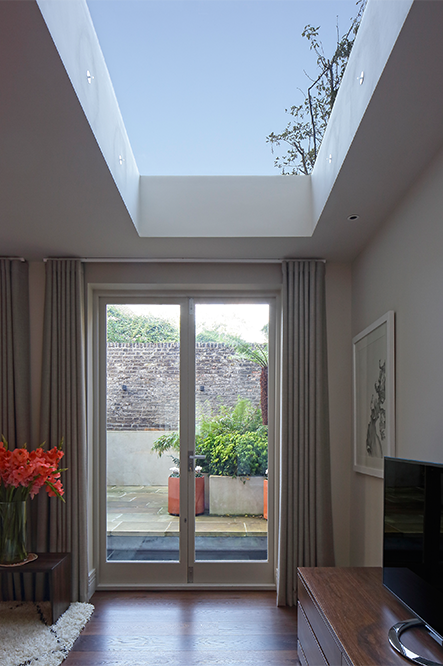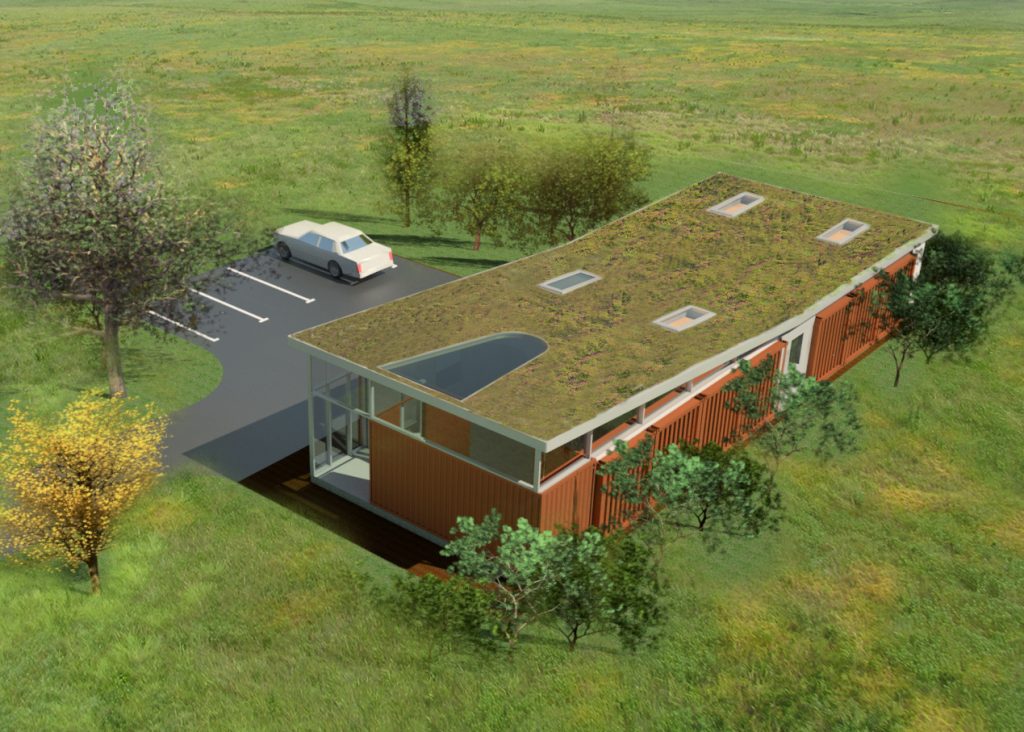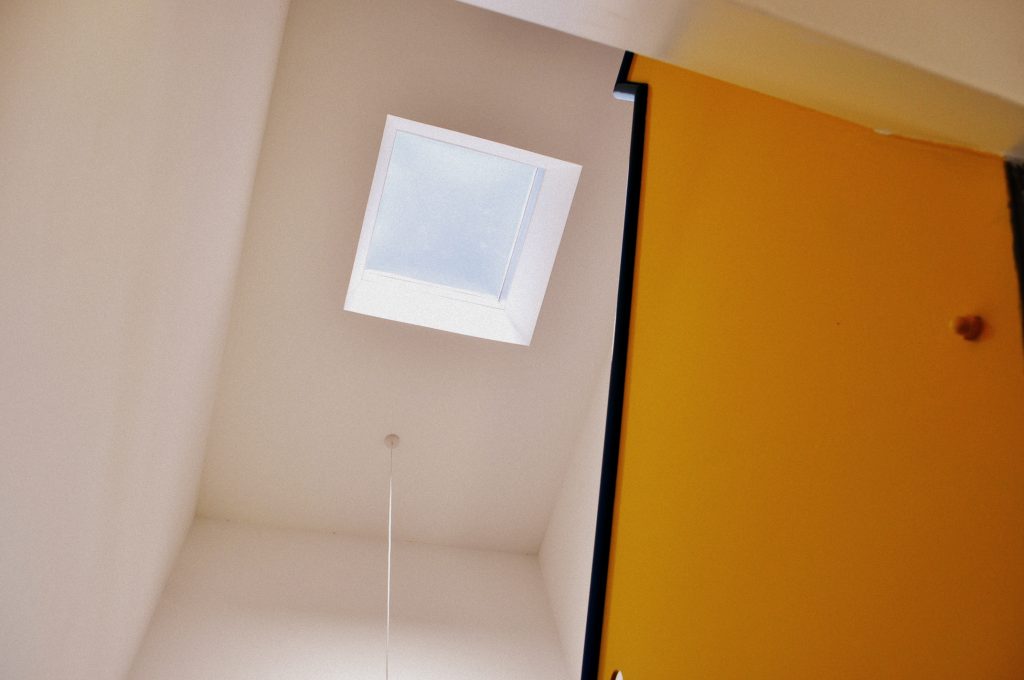


Roof lights in a wide variety of designs and sizes form a great part of our work. When we start on a design project many sketches are drawn in the form of a section and this straight away highlights how a roof light might be integrated into a project. We are considering both the flood of light into a space and also the sequence of views out.
Roof Light Design
Roof lights in a wide variety of designs and sizes form a great part of our work. When we start on a design project many sketches are drawn in the form of a section and this straight away highlights how a roof light might be integrated into a project. We are considering both the flood of light into a space and also the sequence of views out.
The location of roof lights can help provide a ‘route’ through a building. The composition of a roof light set within the roof is an important one. The contrast of sleek modern roof lights set within a green sedum roof works very well. Equally a roof light located within a rubble roof provide an interesting contrast of technologies and materials. In the early years building at Anthony Roper school a series of roof lights are set within the green sedum ‘spine’ of the building and ensure that all internal spaces benefit from natural light. In this project a series of light tubes are also used to maximise light over kitchenettes.
Rubble Roof
The rubble roof at Eco Shed 02 when photographed or looked down upon looks like solid ground and it is only the introduction of a roof light that makes one think this is a lightweight roof. This small building is overlooked by many properties and the roof composition is an important consideration. Some roofscapes have a large number of roof lights and they ensure that each internal space from WC to Corridor are filled with natural light and this is the case in our community centre in Peacehaven near Brighton. In our private residential projects roof lights are used to great effect too.
Our project in Hastings sees the green roof over the side infill punctuated with a roof lights set over the dining table but also a run a of roof lights et its edge with sit at the top of a light shaft that then lights the basement level. This composition when looking down onto the roof is particularly effective and the introduction of such an amount of daylight and views out works very well in the interior spaces.
Our basement project in Windsor which gained planning permission for a below garden basement to a Grade 2 listed building incorporated roof lights set within the grass and also a fully glazed roof structure that provided the buffer between basement and existing property and within which the basement was accessed. Some of our most successful London basements have located roof lights within an extension over the stair down into the basement. In this way the stair area, typically in the middle of the basement floor is flooded with light and when walking up the stair, views of the sky can be had. We have also designed several basements where the stair is set in a glass cube and flooded with daylight. At our London basement project in Kensington we are including a roof light that provides access to the roof terrace and is raised some distance above the terrace level for ease of access. There are many types of roof light, but the most important decision is how and where it is used and the impact on the interior alongside its composition with the roof it sits within.


